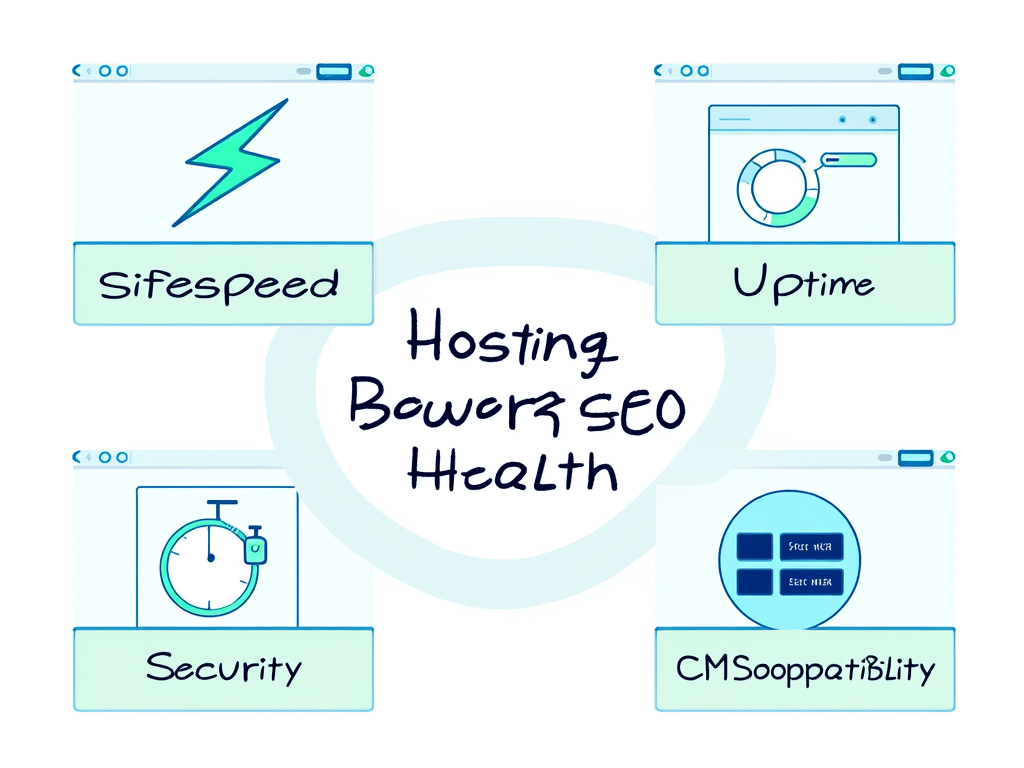როგორ მოვაგვაროთ დომენურ სახელებთან დაკავშირებული დავები კანონიერად და ეფექტურად
მეტა აღწერა: Explore essential steps and strategies for managing domain name disputes, focusing on legal frameworks and proactive measures to protect your brand online.
შესავალი
In the vast digital landscape, where the right domain name can shape a business’s identity, conflicts inevitably arise. Domain name disputes are no longer just the shadowy realm of legal battles but a common reality for entrepreneurs, startups, and established companies alike. These disputes often center around allegations of trademark infringement, bad faith registration, or even simple misunderstandings. Understanding how to navigate these turbulent waters legally and efficiently is essential for safeguarding your online presence.
Let’s dive into the nitty-gritty of domain name disputes, starting with the foundational legal frameworks that govern them. Armed with this knowledge, you’ll be better equipped to handle conflicts and protect your brand in the digital marketplace.
Understanding Legal Frameworks for Domain Name Disputes
Navigating a domain name dispute requires a solid grasp of the legal frameworks available. The most notable among these is the Uniform Domain-Name Dispute-Resolution Policy (UDRP), which was established by ICANN to provide a clear path for resolving disputes.
The UDRP Process: A Deep Dive
The UDRP is designed to resolve conflicts swiftly, usually within a matter of months. Here’s how it typically unfolds:
-
Filing a Complaint: The complainant must demonstrate that they own trademark rights, that the disputed domain name is confusingly similar to their trademark, and that the registrant has acted in bad faith. This requires assembling substantial evidence and documentation.
-
Response by Domain Holder: The domain holder is given the opportunity to respond. They can refute the claims by proving legitimate interest or good faith use of the domain.
-
Panel Appointment and Resolution: An expert panel, usually composed of experienced attorneys or trademark specialists, reviews the evidence provided by both parties. Their decision usually comes within 60 days.
-
Implementation: Once a decision is reached, it’s enforced by the registrar. This enforcement can include transferring the domain to the complainant or canceling the registration entirely.
Key Success Factors in UDRP Cases
To succeed in a UDRP case, certain criteria must be met:
- The domain name must either be identical or confusingly similar to an existing trademark.
- The registrant must not possess any legitimate rights or interests in the domain.
- The domain must have been registered and is being used in bad faith—a key component frequently analyzed in disputes.
Engaging with these elements can determine the outcome of your dispute, making it crucial to understand each one thoroughly.
Costs and Timeframes
Cost-wise, UDRP complaints can be relatively affordable when viewed against traditional litigation. Filing fees generally start at around USD 1,500 for a single domain case. The streamlined nature of the UDRP means you usually see a decision rendered in about two months, enabling a much quicker resolution than court proceedings.
Practical Tips to Handle Domain Name Disputes Efficiently
To navigate these disputes effectively, it's not just about understanding the legal framework but also about implementing proactive strategies. Here are some essential practices:
Proactive Strategies for Domain Name Protection
-
Register Your Trademark and Domains Early: Align your trademark registrations with domain names to establish a solid legal foundation early on. This can significantly reduce the risk of disputes.
-
Monitor Domain Registrations: Utilize domain monitoring services to catch any potential infringement as soon as it's registered. This proactive approach allows businesses to address issues before they escalate.
-
Documenting Trademark Use: Keep a meticulous record of your trademark usage, registrations, and any recognition your brand might have garnered. This documentation is invaluable in supporting your claims during disputes.
-
Consider Amicable Resolutions: Attempting to resolve conflicts through negotiation or mediation can save both time and money. Many disputes can be solved outside a formal framework if parties are willing to communicate.
When to Escalate to Formal Proceedings
Knowing when to escalate a dispute can be a tricky balance of timing and strategy. Here are a few pointers:
-
If negotiations fail or if the registrant demonstrates unequivocal bad faith or intent to disrupt your business, it's time to take formal action.
-
Initiate a complaint through the UDRP or relevant local dispute resolution service, depending on where the domain is registered.
-
If necessary, consider court action—especially if you’re seeking higher damages or intend to get an injunction against the infringer.
Localized Examples That Highlight Best Practices
Understanding the nuances between different jurisdictions can aid significantly in dispute resolution. For instance, in the UK, Nominet's Dispute Resolution Service (DRS) requires complainants to prove that the registration is “abusive” and often emphasizes different standards compared to the UDRP.
These distinctions underscore the importance of adapting your strategy based on local regulations, ensuring that your approach is both efficient and effective.
In essence, dealing with domain name disputes requires a combination of legal knowledge, practical strategies, and an unwavering commitment to protecting your brand. By taking proactive measures, understanding the existing legal frameworks, and being prepared to act decisively, you can navigate the complex world of domain disputes with confidence and clarity. Your digital identity deserves to be protected, ensuring your brand's story continues to unfold in the online realm.
FINDDOMAIN.GE (შპს ინტერნეტ სერვისები) ძალიან საინტერესო და სწრაფად განვითარებადი IT კომპანიაა. ძირითადი მიმართულებებია: ვებ-განვითარება, დომენები და ვებ-ჰოსტინგი. ის ასევე სთავაზობს კლიენტებს ძირითად სერვისებთან დაკავშირებულ ქვე-მომსახურებას და აუთსორსინგს.
საუკეთესო შეთავაზებები:
გსურთ შექმნათ თქვენი საკუთარი კომპანიის ვებსაიტი ან შექმნათ თქვენი საკუთარი ონლაინ ბიზნესი ინტერნეტში?
– ვებ ჰოსტინგი
– დომენის რეგისტრაცია
– ვებ-განვითარება
– საიტის შემქმნელი



## Conclusion: Navigating Domain Name Disputes with Confidence
As we’ve explored, the landscape of domain name disputes is fraught with challenges, but it’s also ripe with opportunities for those who are prepared. Armed with knowledge about the UDRP and the necessary steps to take, both proactive and reactive, you can enhance your ability to safeguard your digital assets and build a resilient online presence.
Key Takeaways for Effective Management
-
Awareness of Rights: Stay well-informed about your trademark rights and the domains associated with them. Regularly perform checks to ensure that your trademarks are protected and that your domains are registered properly.
-
Documentation is Crucial: A well-documented history of your brand will act as your strongest ally during disputes. Evidence of use, public recognition, and formal registrations can greatly bolster your case.
-
Engage Early: If you sense a dispute brewing, engage with the other party as early as possible. Many conflicts can be resolved amicably before they escalate into formal complaints.
-
Explore All Avenues: Be open to different dispute resolution mechanisms available, ranging from UDRP processes to national services like Nominet’s DRS. Tailor your approach based on where the dispute arises.
-
Leverage Visualization Tools: Consider using flowcharts or graphs summarizing dispute processes and timelines to keep track of your actions and ensure that all steps are coordinated effectively.
Real-Life Cases Highlighting the Process
Real-world examples underscore the efficacy of these methods. Take the case of ნაიკი vs. a similar-sounding domain name—Nike was able to effectively argue their case in a UDRP proceeding, demonstrating both bad faith on the part of the registrant and a clear trademark right. This instance illustrates the importance of swift action and adequate documentation, showing that even large corporations resort to structured resolution methods to protect their visibility.
Preparing for the Unforeseen
In the unpredictable online arena, a sound risk management plan is essential. Regular audits of your domain name strategy, swift responses to potential infringements, and staying abreast of changes in domain law can position your business to tackle disputes before they become severe legal battles.
By implementing these strategies and legal frameworks, you not only protect your existing domains but also fortify your brand against future challenges. The goal should always be to utilize the law as a shield, enabling you to navigate the digital seas confidently.
დამატებითი სწავლა და რესურსები
Knowledge is power, especially regarding legal matters and domain disputes. To further enhance your understanding, consider checking out these resources:
-
For a comprehensive overview of the UDRP process, watch this insightful video: Understanding UDRP.
-
To gain insights into real-world examples of domain disputes, view this discussion here: Domain Name Disputes Explained.
ცნობები
[1] ICANN – Uniform Domain-Name Dispute-Resolution Policy
[2] Trademark Registration Guide
[3] UDRP Complaints Process Overview
[4] Nominet DRS Dispute Resolution
[5] Cost Comparison of UDRP and Litigation
[6] Bad Faith under UDRP Standards
[7] Legal Frameworks for Domain Names
[8] National Procedures for Domain Disputes
By understanding the interplay between legal frameworks and practical strategies, you’re equipping yourself to not only respond to disputes but to preemptively ward them off. Embrace this knowledge and let it serve you as you navigate the vast world of online branding. Your digital identity is invaluable, and with the right tools, you can ensure its protection against all odds.
FINDDOMAIN.GE (შპს ინტერნეტ სერვისები) ძალიან საინტერესო და სწრაფად განვითარებადი IT კომპანიაა. ძირითადი მიმართულებებია: ვებ-განვითარება, დომენები და ვებ-ჰოსტინგი. ის ასევე სთავაზობს კლიენტებს ძირითად სერვისებთან დაკავშირებულ ქვე-მომსახურებას და აუთსორსინგს.
საუკეთესო შეთავაზებები:
გსურთ შექმნათ თქვენი საკუთარი კომპანიის ვებსაიტი ან შექმნათ თქვენი საკუთარი ონლაინ ბიზნესი ინტერნეტში?
– ვებ ჰოსტინგი
– დომენის რეგისტრაცია
– ვებ-განვითარება
– საიტის შემქმნელი








